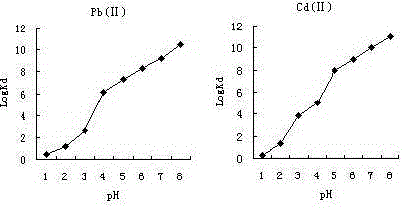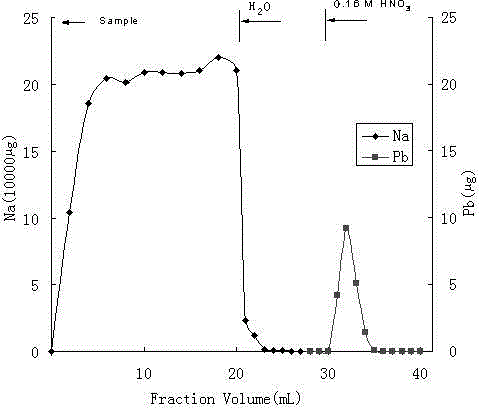Separation, enrichment and detection method of trace lead and cadmium ions in table salt
A technology of separation, enrichment and detection method, which is applied in the detection field of atomic absorption spectroscopy, which can solve problems such as difficulty in measurement, background interference, and influence on arc temperature, and achieve the effects of improving separation speed, eliminating spectral interference, and low analysis cost
- Summary
- Abstract
- Description
- Claims
- Application Information
AI Technical Summary
Problems solved by technology
Method used
Image
Examples
Embodiment Construction
[0017] The technical solutions of the present invention will be further described below in conjunction with specific examples, and these examples should not be construed as limitations on the technical solutions.
[0018] 1. Instruments and reagents: atomic absorption spectrometer (Shimadzu A6300C, PEAA800); microwave digestion instrument (Leeman MSW3+); ultrapure water instrument (Milli-Q); lead standard solution (National Standard Materials Research Center); Cadmium standard solution (National Standard Materials Research Center); Chelex-100 resin (100~200 mesh); small ion exchange column (self-made).
[0019] 2. Experimental process:
[0020] 1. Production of small ion exchange column: use 5mL acid burette, the upper part of the column has a 5cm long 18*50mm wide mouth, such as figure 1 shown;
[0021] 2. Column packing: Polyester filaments are placed at the bottom of the column; put 5.0g Chelex-100 resin in a 100mL beaker, add 20mL water, stir with a glass rod, transfer ...
PUM
 Login to View More
Login to View More Abstract
Description
Claims
Application Information
 Login to View More
Login to View More - R&D
- Intellectual Property
- Life Sciences
- Materials
- Tech Scout
- Unparalleled Data Quality
- Higher Quality Content
- 60% Fewer Hallucinations
Browse by: Latest US Patents, China's latest patents, Technical Efficacy Thesaurus, Application Domain, Technology Topic, Popular Technical Reports.
© 2025 PatSnap. All rights reserved.Legal|Privacy policy|Modern Slavery Act Transparency Statement|Sitemap|About US| Contact US: help@patsnap.com



